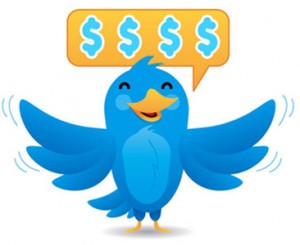10 things small businesses should know about using Twitter


Meanwhile, the social networking company has released a guide to help small-business owners get started as tweeps (see below). Some of the ideas are very rudimentary and intended for neophytes, focused on explaining how to use hashtags or retweets to reach different or broader audiences.
For example, here are some terms you'll need to know, if you don't know them already:
- Tweet - The term describing a 140-word-limit comment sent out over Twitter. (Can also be a verb!)
- Tweep - Someone who uses Twitter.
- Hashtag - Twits rely on a hashtag, aka the # symbol, to reach certain audiences. For example, there may be a community that likes reading all tweets about #greentech. You can set up a custom search and follow all comments related to a certain hashtag.
- Retweet - This is a noun or verb to describe when someone passes one of your tweets along to his or her followers in its entirety.
- Mention - When someone mentions and comments on something you've broadcast without necessarily retweeting the whole tweet.
- Links - To get around the 140-character limit for tweets, you can add a link (which WILL take up space). So, you might comment on a new promotion and include a link that can be visited for more information.
- Meetup - When tweeps who converse regularly over Twitter get together "live" to continue a conversation or attend an event of mutual interest.
- Direct message - When you follow one of your followers, you open the door to receiving direct messages from that individual.
Aside from these basic things, here are some best-practice suggestions that bear reporting for those of you who haven't lived in Twitterdom as long as I have (working on my fifth year).
- Keep it simple. Pick a Twitter handle or name that is easy to find and remember (and that doesn't take up too much of the 140-character limit you will have to make comments). It's great if you can use your company's name, but if you have to shorten it, pick something simple. So, for example, "Sightglass Coffee" becomes @Sightglass on Twitter. You can use your profile description to communicate the full name of your company (it will come up when someone looks at your profile). Use the description wisely to say what you want to say the most.
- Listen. What you say is what you are. Take time to "listen" to other businesses like yours before you dive into making your own comments. Use search.twitter.com to find and follow (become a subscriber) to the comments of business owners like you. Also be sure to look at the hashtags they are using, because you might want to use them, too.
- Seek. Identify and follow conversations that are already happening about your business. You don't have to follow everyone who follows you but you definitely want to follow those people that you might want to have a direct conversation with over time.
- Share. Don't forget to follow your employees, so that you can retweet them or mention them when they are talking bout things that relate to your business. It will make your company seem more human.
- Don't be too formal. Could someone respond to what you want to say easily? Does it invite conversation?
- Establish frequency. There is no hard and fast rule about how often you should send out tweets. Some businesses schedule or time messages to go out over a period of time. Others only send out messages occasionally. The more frequently you tweet, the more likely you are to build a network of followers. So, while sending a tweet every five minutes might be annoying (and might get lost), once a week just isn't enough.
- Interact, don't just broadcast. The best way to come to the attention of others is to participate in conversations they are having, if they are relevant. That means retweeting their comments, reply to things they might be saying about your business, or answering questions.
- Take it direct. In its guide, Twitter offers the reminder that sometimes conversations should be taken private. If a customer has a specific problem or question, for example, it might be better handled as a direct message exchange rather than a public interaction. Then again, if you think the resolution might interest everyone, you can solve it publicly.
- Be relevant and interesting. This is my favorite part of the Twitter guide, because it cannot be understated. The more you are willing to share with your followers, the more engaged they will become. I can say from experience that this is true. Sending photos (maybe of a new store?) will inspire retweets and comments, as will relevant links to thought-provoking news articles and videos. Twitter is a great place to ask questions, because questions will almost immediately engage the reader. Offers and discounts are also likely to be passed along, which can help increase your Twitter following.
- Promote your Twitter identity in the real world. Include your handle on business cards, advertisements, on your Website and blog -- even on your packaging or bags.